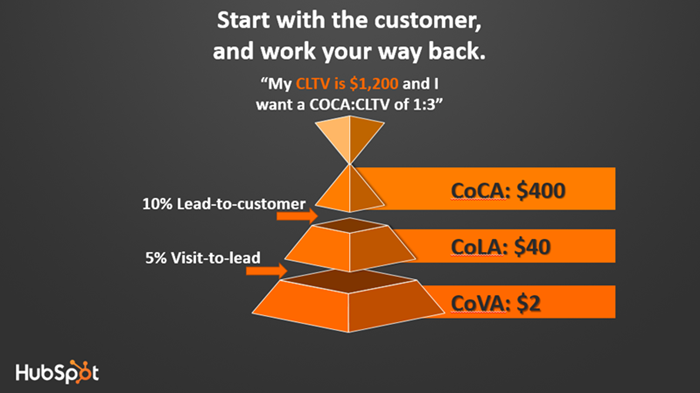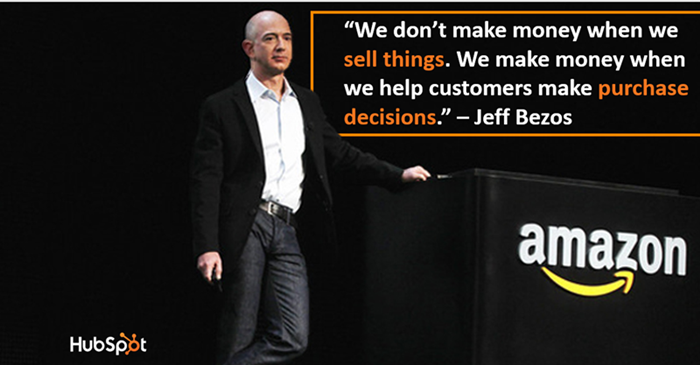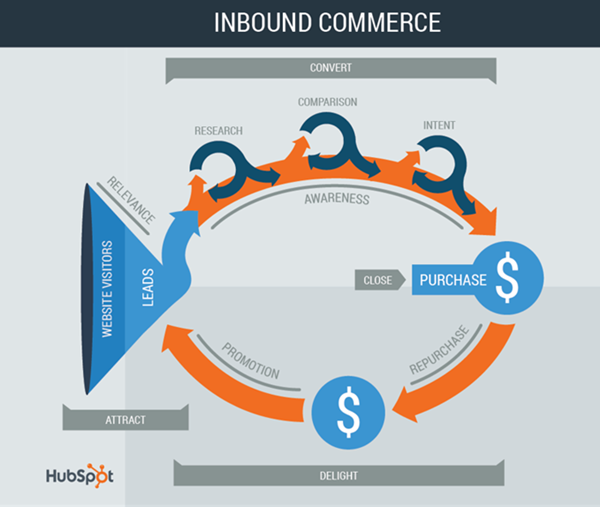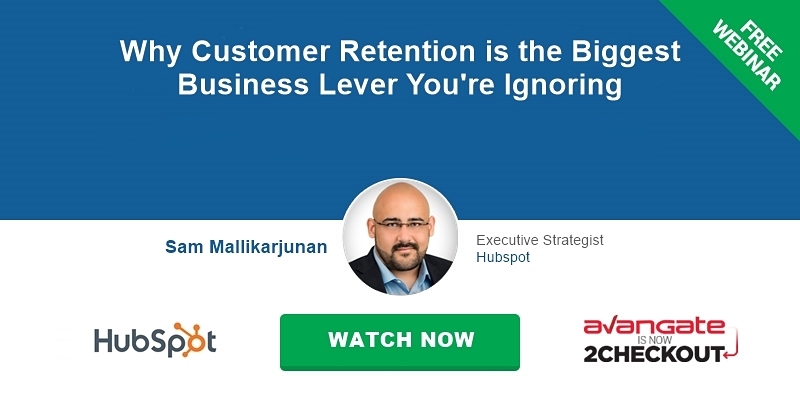Is your company on the Fortune 500? There could be a spot opening up soon.
We recently hosted a webinar with HubSpot Executive Strategist Sam Mallikarjunan, who explained that the lifespan of a Fortune 500 company has declined from 75 years to just 15. This level of turnover represents a big opportunity for new businesses to join the Fortune 500. Could yours be next?
Read on for tips from the webinar on making customer retention the lever that catapults your growth to the next level.
Marketing Is Changing Fast
Just as the Fortune 500 is getting shaken up, so too are today’s marketing tactics vastly different from those of days gone by. Knowledge is depreciating much faster than it used to, and it’s increasingly difficult to reach consumers with traditional methods: 86% of consumers skip TV ads and 91% unsubscribe from emails, while 44% of direct mail is never opened and 200 million people are on the do not call list. Whew! It’s clearly time to change tactics.
To Move from Marketing to Growth, Flip the Funnel
As marketing tactics evolve, what should companies do to succeed? Make the game-changing shift from thinking about marketing, which tends to involve customer awareness and acquisition, to focusing on sustainable growth, which also encompasses customer activation, retention, revenue, and referrals. In other words, flip the funnel: start with the customer and work your way back. If you truly understand what current customers need and why they stick around, you’ll not only manage to keep more customers but also improve your targeting of new ones.

To Spend More on CAC, Increase CLTV
You can only reduce your customer acquisition cost (CAC) so much, but if you’re really good at keeping customers, you can spend more to get new ones. In other words, when customer lifetime value (CLTV) goes up, CAC can go up too. Today’s inbound marketing strategy goes beyond conversion to include delighting customers, which helps keep them around for the long run. Think about ways to surprise and delight your customers so you can retain them over time—and spend more to get them.
The higher your average CLTV, the more you can spend to get the right customer—the one that will have a high lifetime value. Starbucks, for example, is able to spend thousands of dollars to get a customer, because it has a CLTV of more than $14,000. That’s right: even a company that sells $2 (okay, more like $4) coffee can make a good amount of money over time by acquiring the right customers and fostering loyalty among them.
Keep reading for some ways you could amp up your CLTV.
- Help Customers Make Decisions
Too often, marketing is all about making the sale. Instead of focusing on sales, think about helping your customers make decisions. Give them the (unbiased!) information they need to make the right decision about a product in your category. If they choose your product, great: you’ve got a new customer! But whether visitors choose your product or not, the value of the information you provide can keep them coming back: either to convert into a customer in the future or to increase their CLTV with another purchase.
Delivering the right information is a win on both fronts. Additionally, knowing what information people are looking for will also give you a better understanding of your customers, which in turn helps you sell better.

- Create Active Users through Customer Centricity
You can acquire a ton of users much faster today than in the past: radio took 38 years to reach 50 million listeners, while Angry Birds got that many people to start saving eggs from pigs in just 35 days. But how many people are still playing Angry Birds today—and what’s the CLTV of an Angry Birds user? Probably not that much, if we’re being realistic. Similarly, Pokemon Go was an instant hit, sending hordes of people out to Pokestops, but the number of players declined rapidly over time.
As a rough guide, you should aim to keep at least 50% of your user base active. If you lose more than half of your users, you don’t have good product/market fit and need a better product and/or a better understanding of your target audience. You can move closer to achieving product/market fit through customer centricity: survey customers to better understand their needs and pay attention to what they say.
However, don’t assume customers need exactly what they ask for—Henry Ford famously said that his customers would have asked for a faster horse when what they needed was a car. Figure out what your customers really need and deliver that.
- Turning Customers into Promoters and Employees into Retainers
The holy grail of retention is customers that don’t just stick around, but actively promote your business by recommending you to other customers. This helps reduce your CAC because your customers are actually acquiring other customers for you (score!). Could there be anything better? By continually delighting your customers through truly understanding their needs, you can turn them into active promoters.

Finally, consider how you incentivize internal teams. If salespeople are measured only by the number of sales they make, they have limited incentive to do anything more than land an initial sale. If you tie their commission to customer longevity or CLTV, or give bonuses for attracting long-term customers, sales staff will be more invested in finding the right long-term customer fit. Similarly, find ways to focus your customer activation and support teams on keeping customers happy for the long haul. Above all, make someone in your company directly responsible for raising CLTV. If no one is, there will always be excuses for why it’s not a priority right now.
Do you have enough info to get started with activating your customer retention lever? If not, watch the full webinar for more.






